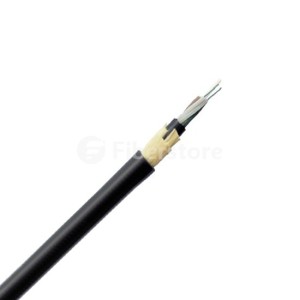Choosing the right fiber-optic cable has become more challenging than ever. The advent of new cable designs, many suppliers, changes in fiber specifications, and the many claims of cable performance can confuse even the most seasoned designers.The selection of the basic cable design is most dependent on the application and installation environment. The main objective in the cable design is to protect the fiber from stress and other environmental forces during installation and over the life of the product. From a technical standpoint, more than one type of cable may fit the bill for many applications. In that case, other factors such as ease of use, size, and cost will be added to the evaluation and selection process.
Let`s begin outside. The outdoor environment subjects a cable to the most extreme range of environmental condi- tions. These conditions include a wide operation-temperature range, thermal shock, wind loading, ice loading, moisture, and lightning. Therefore, protecting and preserving the optical properties of the fiber is a design priority.
The most proven fiber-optic cable technology for long-term reliability outdoors is the loose-tube, gel-filled design. This type of cable protects the fiber from stresses caused by the environment, namely moisture and temperature. Loose-tube cables, whether flooded under the jacket or water-blocked with dry, swellable materials, protect the fibers from moisture and the long-term degradation moisture can cause. As we all know, Fiberstore is the largest bulk fiber optic cable supplier, we provides a wide range of quality optical fiber cables with detailed specifications displayed for your convenient selecting.
The gel within the loose-tube construction stops the penetration of water and keeps it away from the fiber. In cold temperatures, the protection keeps water from freezing near the fiber–eliminating possible stress fractures. Since the fibers are able to move within the tube, the expansion or contraction that temperature fluctuations can produce in other materials does not transmit stress to the fibers.
Overall, loose-tube cables offer the best protection in an outdoor environment, especially in the less-sheltered applications involving aerial or direct-buried installations. The loose-tube design isolates the fibers from outside environmental and mechanical stresses. The optical performance is virtually unchanged as the cable is exposed to the elements. Telcordia Technologies, BICSI, RUS (Rural Utility Service), and the telco and cable-TV markets support this design.
Loose-tube cores are best-suited for armored applications, double-jacketing for more severe environments, and in figure-eight and all-dielectric self-supporting designs. Tight-buffered designs often do not have anti-buckling elements and do not decouple the fiber from extreme stresses, such as the material contractions that are experienced at extremely cold temperatures. This is why loose-tube cables are so widely accepted for use in outdoor environments. Talk too much about loose-tube cable, now we introduce you one of the loose tube cable for you, it is Loose Tube Type ADSS Cable. As shown following picture:
This Loose Tube Type ADSS Cable from Fiberstore is ideal for installation in distribution as well as transmission environments, even when live-line installations are required . As its name indicates, there is no support or messenger wire required, so installation is achieved in a single pass, making ADSS an economical and simple means of achieving a fiber optic network .
Moving indoors
At the other extreme is cable suitable only for indoor use. The indoor environment is less hostile and not subject to the extremes seen outdoors. Indoor cables traditionally have been a tight-buffered design with either a riser or plenum rating. These cables must conform to National Electric Code requirements for riser or plenum applications.
Tight-buffered cable designs typically offer a smaller package and more flexible cable. The 900-micron buffered fiber is easier to connectorize, and the cable is generally easier to prepare for termination. These cables do not typically provide protection from water migration and do not isolate fibers well from the expansion and contraction of other materials due to temperature extremes. Tight-buffered cables, often called premise or distribution cables, are ideally suited for indoor-cable runs. OM4 fiber optic cable is tight-buffered cable we often see in many applications such as Local Area Networks (LAN) backbones, Storage Area Networks (SAN), Data Centers and Central Offices.
Now you`re wondering, “What do I do if I need to go in and out? Do I need to buy two types of cables and splice them at building entry?” Actually, until a few years ago, that is exactly what you had to do. Fortunately, design and materials have evolved to meet the needs of indoor/outdoor applications with a variety of cable choices. The most prevalent choice today is a loose-tube, gel-filled, riser-rated cable. This design offers all the proper outdoor protection, and the riser rating allows it to be run within the building (except in the horizontal). There are also loose-tube plenum-rated cables available.

